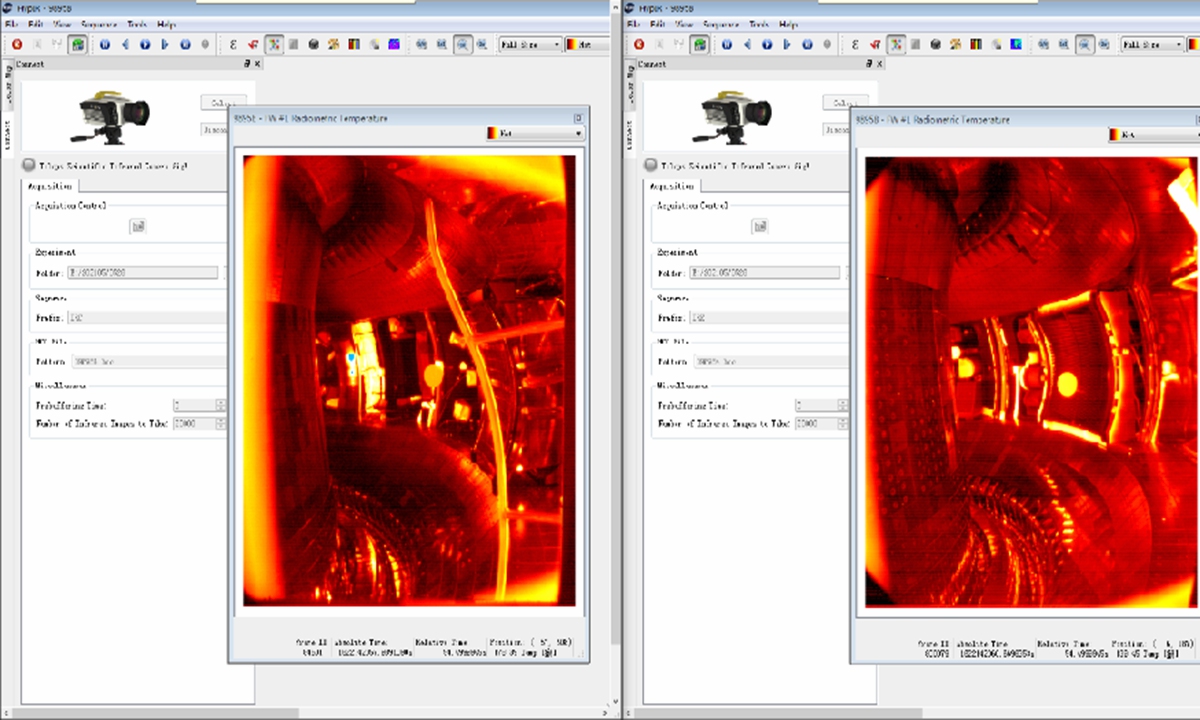China maintains 'artificial sun' at 120 million Celsius for over 100 seconds, setting new world record

Thermo image of inside of the "artificial sun" fusion reactor Photo: screenshot of Xinhua
China broke the record by keeping the Experimental Advanced Superconducting Tokamak (EAST) by achieving plasma temperature at 120 million Celsius for 101 seconds and 160 million Celsius for 20 seconds, a major step toward the test run of the fusion reactor.
The Tokamak devise is located at the Hefei Institutes of Physical Science of the Chinese Academy of Sciences. It is designed to replicate the nuclear fusion process that occurs naturally in the sun and stars to provide almost infinite clean energy through controlled nuclear fusion, which is often dubbed the "artificial sun."
The achievement broke a previous record of maintaining the plasma temperature at 100 million C for 100 seconds. According to Li Miao, director of the physics department of the Southern University of Science and Technology in Shenzhen, it is a milestone in reaching the goal of keeping the temperature at a stable level for a long time.
"The breakthrough is significant progress, and the ultimate goal should be keeping the temperature at a stable level for a long time," Li told the Global Times, adding that the next milestone might be to maintain the stability for a week or more.
Achieving a plasma temperature above 100 million C is one of the key challenges to harness the nuclear fusion. At the end of 2020, South Korea reached 100 million C for 20 seconds. The temperature at the core of the sun is widely believed to be 15 million C, meaning that the plasma at the device's core will be seven times hotter than that of the sun.
The energy generated from nuclear fusion is the most reliable and clean energy, Lin Boqiang, director of the China Center for Energy Economics Research at Xiamen University, told the Global Times on Friday, adding that if the technology can be applied commercially, it will have huge economic benefits.
However, Lin cautioned that as the technology is still in the experimental stage, it still need at least 30 years for the technology to come out of the lab. "It's more like a future technology that's critical for China's green development push."
The experiment of EAST is part of the International Thermonuclear Experimental Reactor (ITER) facility, a global big science project second only to the International Space Station in size, and is being jointly constructed by China, the EU, India, Japan, South Korea, Russia and the US. Its success is significant to future peaceful utilization of international fusion. China devotes around 9 percent of its research and development.
Photos
Copyright © 2021 People's Daily Online. All Rights Reserved.










